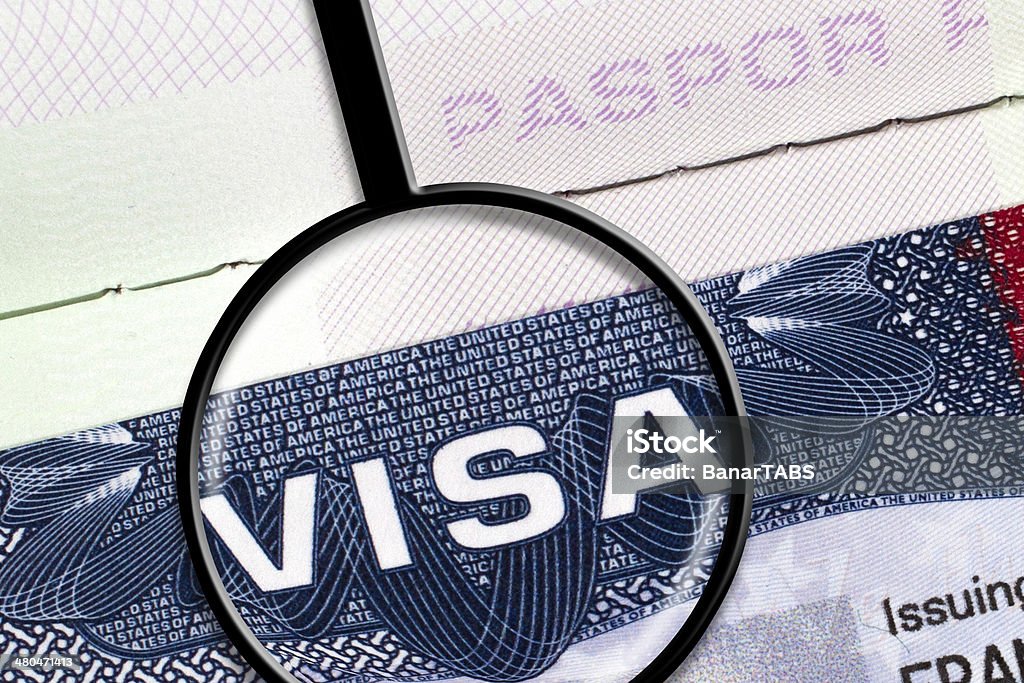It is no secret that immigration is a long and difficult process in the United States[1], but few people are aware of the history that has led to the challenges facing both immigrants and those shaping immigration law and policy today. Due to outdated immigration policies reminiscent of a bygone era, the current immigration system not only disincentivizes legal immigration, but it also harms families and the economy.[2] One of the most significant drivers of this reality is the national origin quota system, which although eliminated in 1965 continues to have a tremendous impact on United States immigration.
On May 19, 1921, the United States Congress passed the “Emergency Quota Act”, a temporary quota law that limited the number of aliens of any nationality who could immigrate to 3 percent of the United States residents of that nationality living in the country in 1910.[3] Western Hemisphere aliens were exempt from the quota if their country of origin was an independent nation and the alien had resided there at least 1 year.[4] At the time, the total annual immigration allowable in any one year was set at 350,000.[5] This act proceeded and preceded a long line of U.S. immigration reform aimed at confining immigration as much as possible to western and northern European descendants.[6] Commenting on the Emergency Quota Act at the time, the minority report noted:
The obvious purpose of this discrimination is the adoption of an unfounded anthropological theory that the nations which are favored are the progeny of fictitious and hitherto unsuspected Nordic ancestors, while those discriminated against are not classified as belonging to that mythical ancestral stock. No scientific evidence worthy of consideration was introduced to substantiate this pseudoscientific proposition. It is pure fiction and the creation of a journalistic imagination. . . The majority report insinuates that some of those who have come from foreign countries are non-assimilable or slow of assimilation. No facts are offered in support of such a statement. The preponderance of testimony adduced before the committee is to the contrary.[7]
It wasn’t until 1952, with the passing of the McCarran-Walter Act (the basic law in effect today), that immigration laws were codified under a single statute.[8] Formally known as the Immigration and Nationality Act (INA), this statute established three principles for immigration policy: (1) the reunification of families, (2) the protection of the domestic labor force, and (3) the immigration of persons with needed skills.[9] Importantly, the INA removed the bar to immigration and citizenship for races that had been previously barred; however, it retained the national origins system.[10] The government amended the INA in 1965 and replaced the national origin quota system with a preference system.[11] The 1965 amendment saw immigrants broken up into seven preference categories, with each category receiving a certain percentage of all available visa.[12] The preference categories were, in this order: (1) unmarried adult children of U.S. citizens, (2) spouses and unmarried children of Lawful Permanent Residents (LPR), (3) members of the professions, scientists, and artists of exceptional ability, (4) married children of U.S. citizens, (5) siblings of U.S. citizens, (6) skilled and unskilled workers in occupations for which there is insufficient labor supply, and (7) refugees given conditional entry (not visas), i.e., from Communist countries or the Middle East.[13]
Although there have been significant immigration reforms since the 1965 amendment, primarily in the 1990s and early 2000s[14], preference categories remain in place. Although preference categories today look different than they did in 1965, the Immigration Act of 1990 allotted each country 7 percent of available green cards for both family-based and employment-based immigrants.[15] This means that every country has a maximum number of 44,100 family-based immigrants and 14,700 employment-based immigrants for each fiscal year.[16] This leaves countries with a large number of people who want to immigrate to the U.S., such as Mexico, China, and India, with enormous backlogs.[17] Within the family and employment categories, the quotas are broken down further by preference category and country of birth.[18][19] This has resulted in wait times of over two decades for many individuals pursuing legal immigration.[20] For instance, a family-based applicant from Mexico in the “F1” category (unmarried sons and daughters of U.S. Citizens) who applied for their visa before October 15, 2001, just now became eligible for the issuance of their visa.[21]


These preference categories, and the blanket 7 percent country cap, retain many of the same discriminatory consequences of the national origins system, and in some cases have exacerbated pre-existing, and created new, issues. Because only a fixed number of people in each category and from each country are able to obtain green cards each year, and the excess carries over into the next year, less green cards are available to people applying each year.[22] Applicants that do not receive green cards get pushed into the waiting pool for the next year, creating a continuously expanding queue.[23] Those with employment visas who apply for a green card are travel-restricted[24] and forced to renew their temporary status until a green card is available. This makes jobs or receiving a promotion difficult.[25] Thus, many skilled workers decide against coming to the United States.[26] Studies have shown that restrictions on highly-skilled immigration pushes companies to move jobs offshore.[27] The seemingly insurmountable and ever-growing backlogs disincentivize legal immigration, and encourages individuals to risk unlawful immigration. As backlogs continue to grow, it becomes more and more difficult for families pursuing a legal pathway to immigration to stay together as children age out of eligibility while their parents wait years for their green cards.[28]
Although on paper the United States has maintained much the same immigration priorities since the 1952 McCarran-Walter Act[29], outdated policies rooted in the national origins system have proven harmful to the enforcement of those priorities.[30] The current system keeps families separated, negatively impacts the economy, and disincentivizes legal immigration. To address this, Congress must examine the roots of U.S. immigration policy – particularly the national origins system – and work on developing a more streamlined process to begin alleviating what are already insurmountable backlogs.
[1] With 10 Million Cases Processed in FY23, US Reduces Immigration Backlog for First Time in Over a Decade, The Economic Times (Feb. 13, 2024). Available at: https://economictimes.indiatimes.com/nri/migrate/with-10-million-cases-processed-in-fy23-us-reduces-immigration-backlog-for-first-time-in-over-a-decade/articleshow/107663934.cms?from=mdr
[2] The Effects of Immigration on the United States’ Economy, Penn Wharton University of Pennsylvania, finding, “Economic analysis finds little support for the view that inflows of foreign labor have reduced jobs or Americans’ wages. Economic theory predictions and the bulk of academic research confirms that wages are unaffected by immigration over the long-term and that the economic effects of immigration are mostly positive for natives and for the overall economy.” Available at: https://budgetmodel.wharton.upenn.edu/issues/2016/1/27/the-effects-of-immigration-on-the-united-states-economy
[3] Ch. 8, 42 Stat. 5 (1921). Available at chrome-extension://efaidnbmnnnibpcajpcglclefindmkaj/https://govtrackus.s3.amazonaws.com/legislink/pdf/stat/42/STATUTE-42-Pg5a.pdf
[4] Id.
[5] Richard A. Boswell, Immigration and Nationality Law 14 (Carolina Academic Press 5th ed. 2018).
[6] See Id. 12-17.Chinese Exclusion Act of 1882; the “Gentleman’s Agreement” of 1907; the 1915 amendment passed by the Senate proposing to exclude “all members of the African or black race” from admission to the United States that was defeated in the House; Immigration Act of 1917; 1924 National Origins Act; the Depression-era Mexican “Repatriation” Campaign that “repatriated” more than 250,000 United States citizens to Mexico; 1950s “Operation Wetback” [Note: The term “wetback” was used by the U.S. Attorney General at the time and is an extremely derogatory term.].
[7] As reprinted in the legislative history of the INA at 1952 U.S.C.C.A.N. 1653, 1668.
[8] Supra note 3, at 16.
[9] Id.
[10] Id.
[11] Id. at 17,
[12] Legal Immigration to the United States: National Quotas & America’s Immigration System, Immigration Forum (Jan. 30, 2024). Available at https://immigrationforum.org/article/legal-immigration-to-the-united-states-national-quotas-americas-immigration-system/
[13] Id.
[14] See Immigration Act of 1990; American Competitiveness in the Twenty-First Century Act (2000); H-1B Visa Reform Act of 2004.
[15] Immigration Act of 1990 101st Congress (1989-1990).
[16] Supra note 10.
[17] Completing an Unprecedented 10 Million Immigration Cases in Fiscal Year 2023, USCIS Reduced Its Backlog for the First Time in Over a Decade, USCIS (Feb. 9th 2024). Available at https://www.uscis.gov/EOY2023
[18] Supra note 10.
[19] U.S. Department of State Visa Bulletin https://travel.state.gov/content/travel/en/legal/visa-law0/visa-bulletin/2024/visa-bulletin-for-may-2024.html
[20] Id. https://travel.state.gov/content/travel/en/legal/visa-law0/visa-bulletin/2024/visa-bulletin-for-may-2024.html
[21] Id.
[22] Supra note 10.
[23] Id.
[24] Andrew Moriarty, “Per-Country Cap Reform,” FWD (Dec. 5th 2023). Available at https://www.fwd.us/news/per-country-cap-reform-priority-bill-spotlight/
[25] Supra note 10.
[26] Id.
[27] Britta Glennon, How Do Restrictions on High-Skilled Immigration Affect Offshoring? Evidence from the H-1B Program (Feb. 21st 2020). Available at SSRN: https://ssrn.com/abstract=3547655 or https://dx.doi.org/10.2139/ssrn.3547655
[28] Documented Dreamers: An Overview, American Immigration Council (Aug. 20th 2021). Available at https://www.americanimmigrationcouncil.org/research/documented-dreamers-overview
[29] Executive Order on the Establishment of Interagency Task Force on the Reunification of Families (Feb. 2nd 2021). Available at https://www.whitehouse.gov/briefing-room/presidential-actions/2021/02/02/executive-order-the-establishment-of-interagency-task-force-on-the-reunification-of-families/
[30] Despite the current administration’s best efforts, backlogs remain extreme. See supra note 15.


